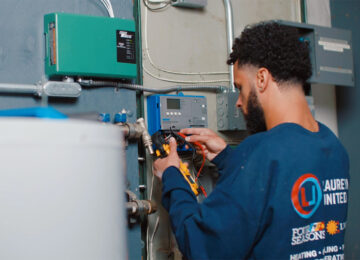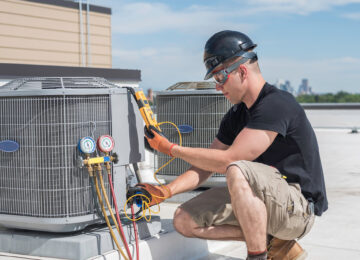Introduction: Your home’s HVAC (Heating, Ventilation, and Air Conditioning) system is the unsung hero that keeps you comfortable year-round. However, like all mechanical systems, it has a lifespan. Knowing when it’s time to bid farewell to your old HVAC system and embrace a new one is crucial for maintaining indoor comfort and energy efficiency. In this comprehensive guide, we’ll explore the signs that indicate it’s time for an HVAC system replacement, empowering you to make informed decisions for your home and family.
Understanding the Lifecycle of an HVAC System: Before delving into the signs that signal replacement, it’s essential to understand the typical lifecycle of an HVAC system. On average, HVAC systems last between 10 to 15 years, depending on factors such as maintenance, usage, and quality of installation. However, individual components within the system, like the furnace or air conditioner, may have different lifespans.
Signs It’s Time for an HVAC System Replacement:
- Age: As mentioned, age is a significant factor in determining the efficiency and reliability of your HVAC system. If your system is approaching or surpassing the 15-year mark, it’s prudent to start considering a replacement, even if it’s still functioning adequately. Older systems are often less energy-efficient and more prone to breakdowns, leading to higher utility bills and frequent repair costs.
- Rising Energy Bills: Have you noticed a steady increase in your energy bills despite consistent usage patterns? This could be a sign of an aging HVAC system struggling to maintain desired temperatures efficiently. As components wear out over time, they require more energy to operate, resulting in higher utility costs. Investing in a new, energy-efficient HVAC system can lead to substantial long-term savings on your energy bills.
- Frequent Repairs: Are you calling your HVAC technician more often than usual to address repairs? While occasional repairs are inevitable, frequent breakdowns and component failures indicate that your system is nearing the end of its lifespan. Continuously patching up an aging system can be more costly in the long run than investing in a new, reliable system that comes with warranties and modern technology.
- Uneven Heating or Cooling: Do certain areas of your home feel warmer or cooler than others, regardless of thermostat settings? Uneven heating or cooling is a common indicator of an HVAC system struggling to distribute air effectively. This could be due to ductwork issues, worn-out components, or an inadequate system size for your home. Upgrading to a new HVAC system allows for better zoning and airflow control, ensuring consistent comfort throughout your home.
- Excessive Noise: Is your HVAC system becoming increasingly noisy during operation? While some level of noise is normal, excessive rattling, banging, or squealing could indicate underlying mechanical problems. These noises often stem from worn-out or loose components within the system. Ignoring unusual noises can lead to more significant issues down the line, making replacement a sensible option to restore peace and quiet to your home.
- Poor Indoor Air Quality: Have you noticed an increase in dust, allergens, or odors circulating throughout your home? Your HVAC system plays a crucial role in maintaining indoor air quality by filtering out pollutants and allergens. However, as systems age, filters become less effective, and ducts may accumulate dust and debris, leading to poor air quality. Upgrading to a new HVAC system with advanced filtration capabilities can significantly improve indoor air quality, promoting a healthier living environment.
- Outdated Technology: Advancements in HVAC technology have led to significant improvements in energy efficiency, comfort, and convenience. If your current system is outdated and lacks modern features such as programmable thermostats, variable-speed motors, or smart home integration, you may be missing out on valuable benefits. Upgrading to a new HVAC system allows you to harness the latest innovations, optimizing comfort while reducing energy consumption.
Conclusion – HVAC System Replacement
Your HVAC system is the backbone of your home’s comfort and indoor air quality. Knowing when it’s time to replace your HVAC system is essential for maintaining efficiency, reliability, and comfort. By recognizing the signs discussed in this guide, you can make informed decisions about upgrading to a new, energy-efficient HVAC system that meets the needs of your home and family. Don’t wait until your old system fails entirely—take proactive steps towards a more comfortable and sustainable future today.




